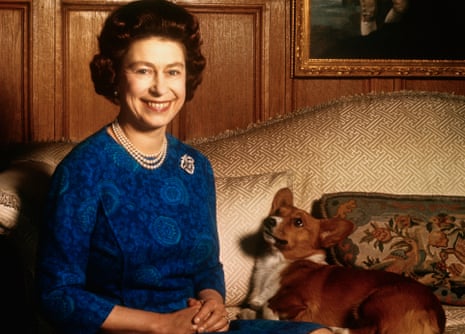In 2014, only 274 new Welsh corgi puppies were registered with the Kennel Club, a low enough number for the club to add the dog to its “vulnerable native breeds” list. Largely known for being the Queen’s dog of choice – it is said that over her lifetime she owned at least 30 – the breed did not appear to benefit from the royal association.
Then, last month, it was reported that internet searches for corgis had increased tenfold in the wake of the Queen’s death, and that puppies normally selling for £1,500 – at a push – were suddenly being offered at £6,000. In death, the monarch had conferred upon the corgi the one thing it lacked, besides proportionate legs: popularity.
At close range, this version of events becomes a little porous. Internet searches do not necessarily translate into owners, especially once the price tag becomes apparent. No doubt anyone determined to pay £6,000 for a dog can find somebody to sell them one at that price, but most of the corgi puppies for sale on the Pets4Home website are being offered at £2,000, which would seem to be a more accurate going rate.
Interest in the breed has been climbing steadily since it was removed from the Kennel Club watch list in 2018 – a change in fortunes that the club in part attributes not to the Queen, but to the Netflix drama series The Crown.
The Queen’s corgis were pembroke Welsh corgis – not to be confused with cardigan Welsh corgis, which remain on the Kennel Club’s vulnerable breeds list. “The pembroke is a leaner build,” says Kevin Egan, editor of Our Corgi World, the newsletter of the principal club for pembroke owners, The Welsh Corgi League. “They are not as high in the withers – the shoulders, in other words. Their faces are foxier, their muzzles are narrower.”

Cardigans also have brushy tails. The tails of pembrokes were traditionally docked, but some have a naturally “bobbed” tail, a more desirable trait now that docking is illegal.
While the two breeds are now categorised as “pastoral” dogs for competition purposes, both were bred as working dogs in their respective regions of Wales. “Pembroke is a cattle county, which is why the pembroke Welsh corgi was bred to basically drive cattle to market,” says Egan. “Cardigan is a sheep county, so they did pretty much the same job, but with a different kind of livestock.”
Egan has three pembrokes – Edward, 11, Barney, six, and Mungo, 20 months – and remembers what he paid for each of them: £750 in 2011; £1,200 in 2017, and £1,350 last year. He has noticed a rise in interest when he takes his dogs out for a walk, or at least in recognition. “No longer do I get asked, what kind of dog is that?” he says. “I’m getting, ‘Ah, the Queen’s dog.’”
Egan accepts the influence of television on the resurgence of the breed. “The Crown did help,” he says. “Very much so, because it was so novel and the dogs were so skilfully placed in it.” But he reckons the climb back from the brink has as much to do with the work he and others have put in, travelling to the Kennel Club’s Discover Dogs shows to drum up interest in the breed. Last year, 1,223 pembroke puppies were registered with the Kennel Club, the highest number in almost 30 years, but that is still some way off the 1960 peak, when almost 9,000 were registered. The following year, Elvis Presley co-starred with a corgi in Blue Hawaii.
Corgis were never really in danger of extinction. They have been consistently popular across Europe and especially in the US, where the American Kennel Club ranks the pembroke Welsh corgi as the 11th most popular breed. What makes this squat, big-eared working dog a desirable household pet?
“Health, intelligence and temperament are my three sort of keynotes,” says Egan. Corgis are obedient when well-trained, but their natural intelligence can make them prone to mischief. “They have the IQ of a five-year-old child, apparently,” says Egan. “If you don’t train your corgi, your corgi will train you.” As we speak on the phone, all three of Egan dogs begin to bark simultaneously because the clock has just gone four, and they know it’s feeding time.
People sometimes think of corgis as lap dogs, but according to Egan they are more appropriately called foot dogs; his like to rest their muzzles on his instep as he sits. This kind of devotion can be a little intense, amounting to constant supervision.

Photograph: Justin Setterfield/AP
Welsh pembroke corgis have a life expectancy of 12 to 15 years and generally enjoy good health. They do have a reputation as “nippers”, but this may be wholly down to the Queen’s dogs, as they often bit footmen and clock winders.
Egan points out that, as working dogs, Welsh corgis shepherded cattle by snapping at their back legs while being low and agile enough to avoid a kicking. They are easily trained out of this behaviour individually, but harder to manage in large numbers, and at certain points the Queen had as many as 13 dogs. “I think the nips and bites and the odd accident at court were probably a result of somebody simply stepping out of line,” says Egan, “because there was no doubt that Her Majesty was the alpha of the pack.”
